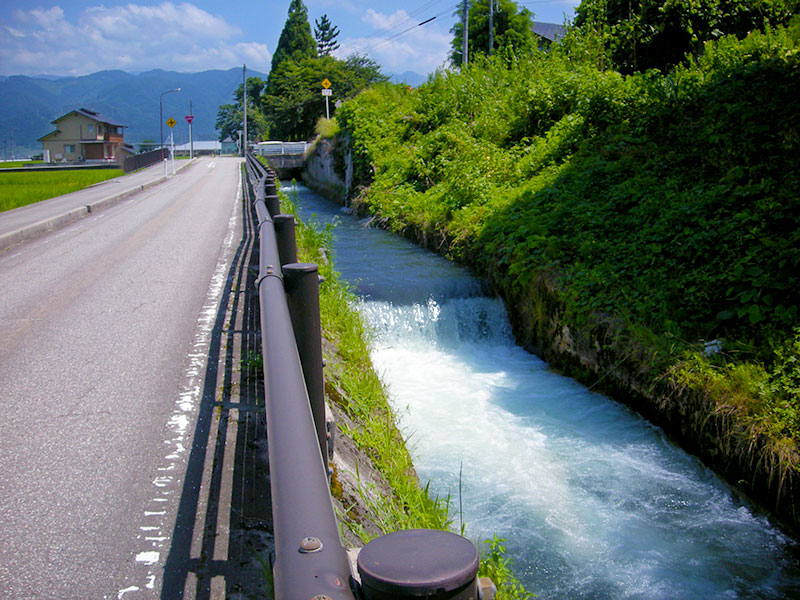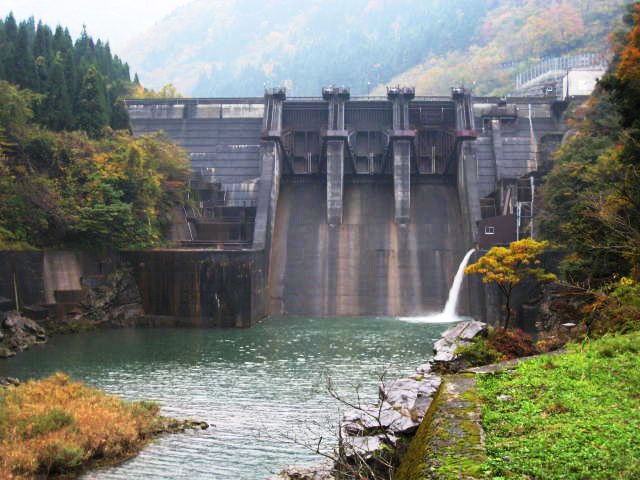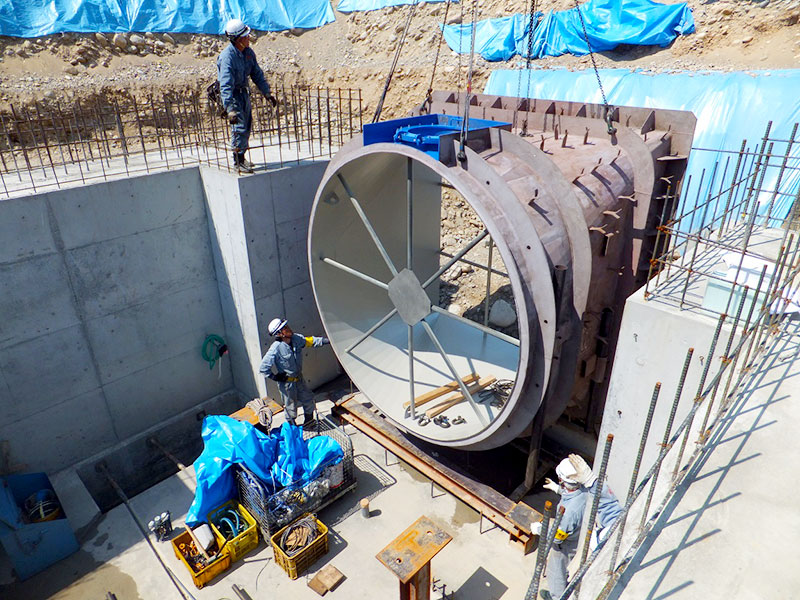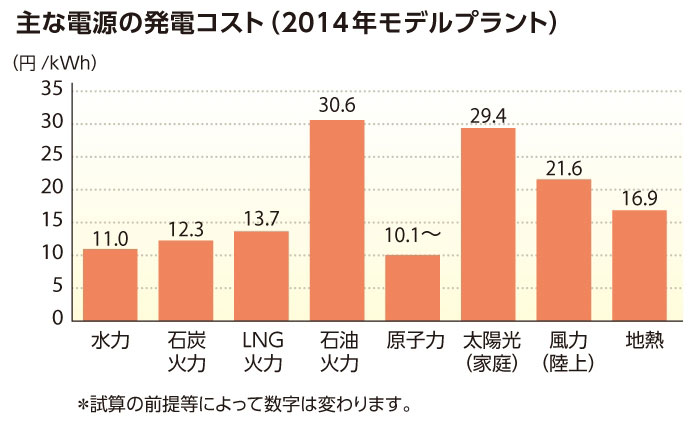Small Hydro (Small-scale Hydroelectric Power Generation)
In a regular hydro power generation system, a large-scale dam is constructed to collect and store up river water, so as to generate electricity. In a small hydro system, however, water is used as it is, without storing it.
Small hydro is a valuable form of renewable energy for achieving a low-carbon society. It puts minimal burden on the environment (clean) and it can be operated with minimal expenditure (low cost).
Small hydro makes effective use of water resources
Notice small hydro systems in places like these!
Small-scale hydroelectric power generation (“small hydro”) utilizes the energy of flowing water. Provided there is a sufficient flow rate and enough vertical drop (“head”), electricity can be generated. More and more attention is being paid to making use of the energy potential of water that is wastefully allowed to flow off in irrigation, river maintenance, and water supply/sewerage systems.
Utilizing irrigation water

There are many places where irrigation water flow and head are large enough for a small hydro system. There are even areas of steep terrain where drop structures are installed to reduce head energy, so as to enable safer water flow. Small hydro systems can be installed in all such places.
Utilizing river maintenance flows

A fixed quantity of water is constantly discharged from Hotokebara Dam, to maintain its function as a river. This discharged water can be utilized to generate electricity.
Utilizing water supply and sewerage systems
When pressure reducing valves are installed along water supply or sewerage systems where the head is high, energy is needless wasted. These valves could be replaced by small hydroelectric generators to capture the wasted energy.
What is an economical candidate site?
Economical candidate sites are sites that offer steady flow rate of water throughout the year and effective head (vertical drop). Among them, the best candidate sites are those where construction costs are low, and where the vested water use rights can be utilized and the application procedure can be simplified.
Where can we find sites that have "Steady flow rate of water throughout the year" and "effective head"
The quantity (flow rate) of water should not vary significantly through the year. Stable flows of water can be expected from irrigation canals (*in non-irrigation periods, new water use rights are required), dam maintenance discharge facilities, and water supply facilities (e.g., water piping). So, provided there is sufficient head (effective drop) for power generation, such locations can make promising candidate sites.
What does “where the vested water use rights can be utilized” mean?
Generally, to use the water that flows in rivers and waterways, etc., water users require permission from the national or prefectural government. Therefore, it is always necessary to obtain permission for water use, even for power generation. However, someone who already has the right to use water may be able to utilize it to generate electricity based on their existing water rights—i.e., without acquiring a new water use permit (new water use rights). In this case, complicated legal procedures can be simplified, which is a big advantage.
Construction costs are also important.

The key elements necessary for power generation are head and flow rate, but construction costs are also very important if electric power generation is conducted as a business on a continuous basis. If a large amount of construction work is needed to generate electricity, the payback period to earn back the invested money will be long, and there may be insufficient money to perform maintenance in the future. For this reason, it is important to select a site where construction costs are not excessive. (Refer to “What is an economical candidate site?” above.)
Ways of using generated electricity (purpose of adoption)
Reducing electricity bills by self-consumption
Small hydro systems have been set up within public facilities (e.g., disaster evacuation sites) to assist with disaster countermeasures and to supply electricity in the event of an emergency (usually used to power the facilities [“self- consumption”], but surplus power is also sold in some cases).
Administrative and maintenance expenses of businesses can be reduced by selling power for income
At irrigation water facilities, the income earned through the selling of power can not only be used to help cover the operating and maintenance expenses of the power generation facility; it can also go towards the maintenance expenses of a whole land improvement facility.
Merits of small hydro
Stable power generation
Solar power and wind power generation are very much affected by the weather, but hydro power systems can produce stable power day and night because they are much less dependent on weather. Also, because hydro power systems feature a high proportion of civil engineering facilities, their total service life tends to be considerably longer than that of other power generation methods.
Hydro power generally suffers few power outages due to repairs or accidents, so it offers a more reliable power supply than other renewable power methods.
Far superior economically
Unlike nuclear and thermal power generation, hydro power does not require fuel, so its long-term power generation cost is stable and predictable. Hydro power generation is also more economical because it is immune to any sudden rises in fuel prices.
Power generation cost as principal power source

Source: Electric Power Generation Cost Verification Working Group, Agency for Natural Resources and Energy
Environmentally friendly
In the face of growing concern about global warming and other environmental issues, hydro power generation stands out as an environment-friendly, clean source of energy that does not emit any carbon dioxide.

